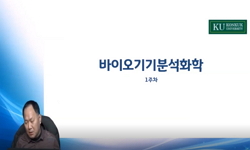Hemorrhage and infarct-like necrosis in the anterior lobe of the pituitary gland is one of the characteristic pathologic findings of the autopsied cases of hemorrhagic fever with renal syndrome {HFRS), although the presence and severity of the foci of...
http://chineseinput.net/에서 pinyin(병음)방식으로 중국어를 변환할 수 있습니다.
변환된 중국어를 복사하여 사용하시면 됩니다.
- 中文 을 입력하시려면 zhongwen을 입력하시고 space를누르시면됩니다.
- 北京 을 입력하시려면 beijing을 입력하시고 space를 누르시면 됩니다.

한국형출혈열에서 뇌하수체기능저하의 의의 = Hypopituitarism in Patients with Severe Hemorrhagic Fever with Renal Syndrome ( Korean Hemorrhagic Fever )한국형출혈열에서 뇌하수체기능저하의 의의
한글로보기https://www.riss.kr/link?id=A3306242
- 저자
- 발행기관
- 학술지명
- 권호사항
-
발행연도
1989
-
작성언어
-
- 주제어
-
KDC
500
-
등재정보
KCI등재후보
-
자료형태
학술저널
- 발행기관 URL
-
수록면
454-462(9쪽)
- 제공처
- 소장기관
-
0
상세조회 -
0
다운로드
부가정보
다국어 초록 (Multilingual Abstract)
Hemorrhage and infarct-like necrosis in the anterior lobe of the pituitary gland is one of the characteristic pathologic findings of the autopsied cases of hemorrhagic fever with renal syndrome {HFRS), although the presence and severity of the foci of the lesions appear to be related to the stage of disease at the time of death. Theses lesions, seen in the anterior lobe of the pituitary gland, suggest that patients who have a severe but non-fatal attack of HFRS may have acute pituitary failure, so-called pituitary apoplexy in a broad sense, and subsequent permanent pituiarty hypofunction. However, several cases of hypopituitarism have been reported and most of these cases are known as sequelae of HFRS which were confirmed after recovery of HFRS. To determine the functional and morphologic changes of the anterior lobe of the pituitary gland in the patients with severe HFRS and to evaluate the relation between pituitary hypofunction and clinical features of HFRS, measurements of hormonal levels of the target gland and pituitary gland, the combined TRH, LHRH and insulin-induced hypoglycemic stimulation test and analysis of clinical features were performed. Results were as follows: 1) Of 25 patients with HFRS who had the combined pituitary stinulation test, 8 patients showed panhypopituitarism during the late oliguric and diuretic phase. 2) In the 7 of the 8 patients with hypopituitarism, a postcontrast sella CT or sella MRI scan was performed. Postcontrast sella CT scan showed variable findings according to the stage of illness at the time of imaging and also revealed variable findings with time on followup studies: intrasellar low density (2 patients) about 2 weeks after onset of illness, normal (2), low density (1) or pituitary atrophy (2) about 1 month after onset, and atrophy (3) about 3 months after onset of illness. In one patient who took sella CT and MRI scans about 2 weeks and 3 months after the onset of illness, the initial MRI scan showed a high signal intensity at the same area where the postcontrast sella CT scan revealed low density, which meant pituitary hemorrhage. These findings disappeared and partial pituitary atrophy was shown on subsequent MRI and CT scans. 3) Clinical features in 8 patients with HFRS were primary shock (7 patients), secondary shock during the late oliguric phase (2) and diuretic phase (4), major hemorrhage such as melena (8), hematemesis (3), hemoptysis (1) and hematoma (1), and CNS manifestations which were altered consciousness from confusion and drowsiness to coma (8), seizure (3) and facial palsy (1). Of the 8 patients, 3 had hypoglycemic symptoms with sudden altered consciousness and hypotension and responded to intravenous administration of glucose. In conclusion, these finding showed that morphologic and functional abnormalities of the anterior pituitary gland occur during the acute stage of illness. This unrecognized acute hypofunction of the pituitary gland should be considered in patients who have secondary shock or altered consciousness of unidentified causes, especially during the oliguric and diuretic phase. Such recognition may contribute to preserving life in some cases of severe HFRS.
동일학술지(권/호) 다른 논문
-
- 대한내과학회
- 강진경(Jin Kyung Kang)
- 1989
- KCI등재후보
-
ERBD 후 배액관 기능 평가에 대한 초음파촬영술의 의의
- 대한내과학회
- 이문성(Moon Sung Lee)
- 1989
- KCI등재후보
-
말단비대증 환자에서 다량의 SMS 201 - 995 장기투여 효과
- 대한내과학회
- 김세윤(Se Yoon Kim)
- 1989
- KCI등재후보
-
B 형 만성간질환 환자에서 Hepatitis Be Antigen 양성여부와 PPD 반응과의 상호 관계
- 대한내과학회
- 김해련(Hae Ryun Kim)
- 1989
- KCI등재후보




 KISS
KISS







